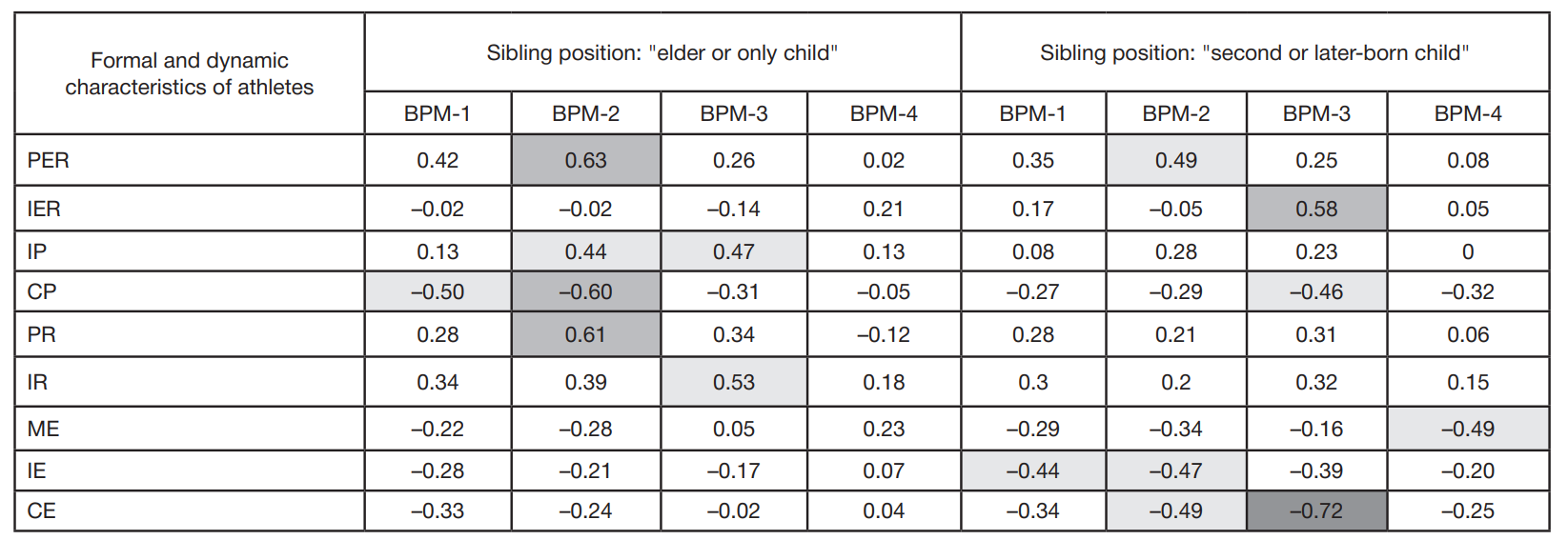
This article is an open access article distributed under the terms and conditions of the Creative Commons Attribution license (CC BY).
ORIGINAL RESEARCH
Sibling position as a condition for the formation of some formal and dynamic features of athletes
Federal Research and Clinical Center for Sports Medicine and Rehabilitation of the Federal Medical Biological Agency, Moscow, Russia
Correspondence should be addressed: Tatiana V. Bogun
B. Dorogomilovskaya, 5, Moscow, 121059, Russia; ur.liam@1nugob
Author contribution: Bogun TV — data acquisition, study concept and design, manuscript writing, literature review, data interpretation; Rakitina OV — literature review, planning the empirical phase of the study, analysis and interpretation of the results, editing; Gornov SV — editing, approval of the final version of the article, general management.
Compliance with ethical standards: the study was performed in accordance with the guidelines “Organization and Execution of Psychophysiological Assessment of the Russian National Team Athletes Within as Part of Extensive Medical Examination” and approved by the Academic Board of the Federal Research and Clinical Center for Sports Medicine and Rehabilitation of FMBA of Russia (protocol № 4 of 3 June 2016), it was also in line with the guidelines “Assessment of the Highly Trained Athletes’ Psychological State as Part of Extensive Medical Examination” and was approved by the Academic Board of the Federal Research and Clinical Center for Sports Medicine and Rehabilitation of FMBA of Russia (protocol № 16 of 29 March 2018); the informed consent was submitted by all study participants.



